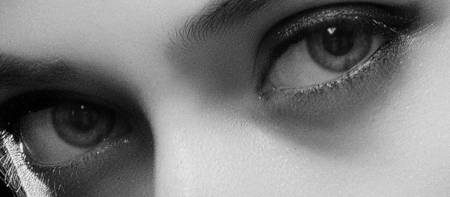Situational Awareness: The Key to Staying Safe in Any Situation

What is Situational Awareness?
Situational awareness is the ability to observe, process, and react to your surroundings to avoid potential dangers. Whether you’re walking alone at night, shopping in a crowded store, or driving through an unfamiliar area, being aware of what’s happening around you can be the difference between staying safe or becoming a target.
Why is Situational Awareness Important?
Criminals often target individuals who appear distracted or unaware of their environment. By maintaining a high level of awareness, you can:
✅ Spot potential threats early
✅ Avoid dangerous situations before they escalate
✅ React quickly to unexpected events
✅ Increase confidence in public spaces
According to FBI crime reports, attackers rely on the element of surprise. The more aware you are, the less likely you are to be caught off guard.

How to Develop Situational Awareness
You don’t need military or law enforcement training to sharpen your situational awareness. Here are practical steps to train your mind and body to stay alert:
1. Pay Attention to Your Environment
Avoid walking with your head down (especially looking at your phone)
Keep one ear free if listening to music
Scan your surroundings—look for unusual behavior
Pro Tip: Practice the "10-5-2" rule when in public spaces:
- 10 feet away: Scan for exits, people, and objects around you
- 5 feet away: Identify anything that seems out of place
- 2 feet away: Assess potential threats and your reaction time
2. Trust Your Instincts
If something feels off, it probably is. Don’t dismiss gut feelings—they are your body’s natural alarm system.
- Cross the street if someone makes you uneasy
- Change your route if you notice unusual behavior
- Enter a public space if you feel followed
Real-Life Example:
Many self-defense instructors train individuals to act on intuition rather than second-guess themselves. If a situation makes you uneasy, act quickly—it's better to be overcautious than caught off guard.
3. Use the OODA Loop
The OODA Loop (Observe, Orient, Decide, Act) is a military strategy used in self-defense to stay one step ahead of threats:
1️⃣ Observe – Scan your surroundings constantly
2️⃣ Orient – Identify people, exits, and escape routes
3️⃣ Decide – Plan what action you will take if a threat arises
4️⃣ Act – Take action immediately if necessary
This technique prepares your mind to react before a threat becomes dangerous.
4. Identify and Avoid Potential Threats
Criminals often follow predictable patterns. Be aware of:
❌ Individuals who seem to be watching you too closely
❌ Unusual loitering in public spaces
❌ Someone following your movements
❌ Distractions designed to divert your attention (bumping into you, asking for directions)
If you notice any of these red flags, take action immediately—don’t wait until it's too late.
"Situational awareness starts with being aware of your environment. If you haven’t yet, read our guide on Being Aware of Your Surroundings."
5. Keep a Self-Defense Tool Ready
Even with strong situational awareness, having a self-defense tool gives you a physical advantage if a threat escalates into an attack. Consider carrying:
Pepper Spray – Small, lightweight, and effective from a distance
Stun Gun or TASER – Can incapacitate an attacker in seconds
Tactical Flashlight – Temporarily blind a potential threat
Personal Alarm – Alerts others and deters attackers
Having a tool is only useful if you know how to use it—practice deploying it quickly so it becomes second nature.
Everyday Situational Awareness: Where and When to Be Most Alert
Situational awareness is crucial in specific environments where threats are more likely to occur:

Parking Lots & Garages – Stay near well-lit areas, have keys in hand, and scan before unlocking your car
Public Transportation – Avoid standing near exits where someone could snatch your belongings
ATMs & Gas Stations – Be extra cautious at night, and watch for people lingering nearby
Jogging & Walking Alone – Change your route often, and avoid wearing both earbuds
Shopping Centers – Be mindful of distraction techniques used by pickpockets
"Want to improve your ability to notice crucial details? Our guide on Becoming More Observant for Personal Safety offers step-by-step training techniques."
Final Thoughts: Stay Aware, Stay Safe
Situational awareness is one of the most powerful self-defense skills you can develop. By staying alert, trusting your instincts, and knowing how to respond to potential threats, you can significantly reduce your risk and move confidently through the world.
✅ Be proactive, not reactive
✅ Train your mind to spot danger early
✅ Carry a self-defense tool as a backup
What steps do you take to stay aware in public? Share your tips in the comments!
Add your comment now!
Post CommentRecent posts
-
06/27/2025Personal Safety Devices for Women
-
06/27/2025Can You Bring Pepper Spray on a Plane?
-
06/27/2025Are Butterfly Knives Illegal?
